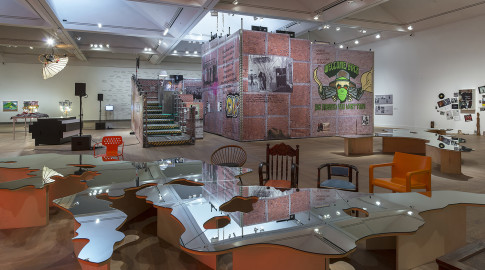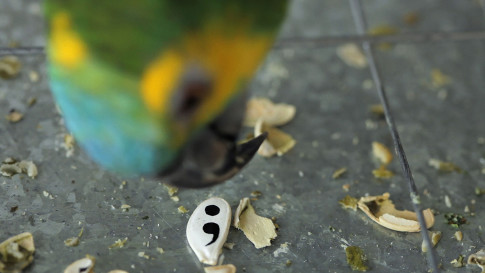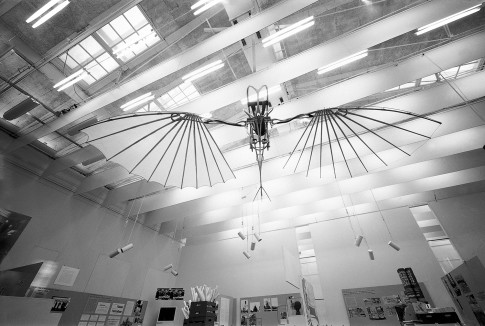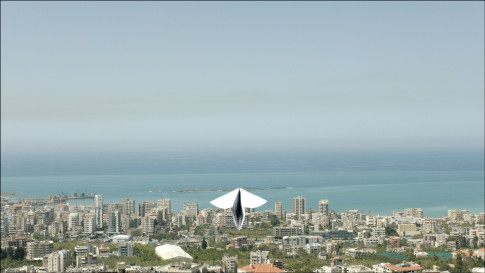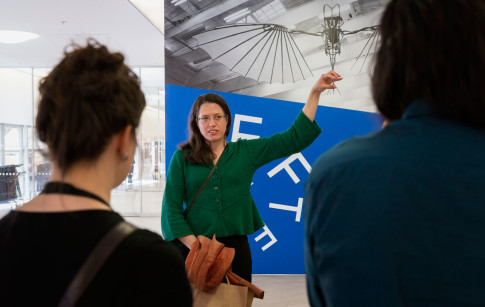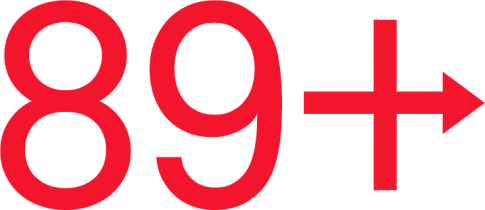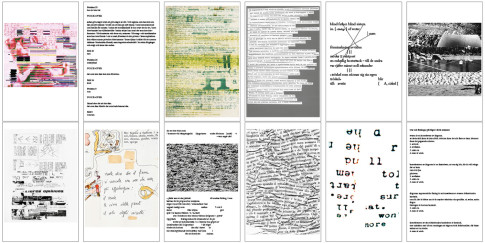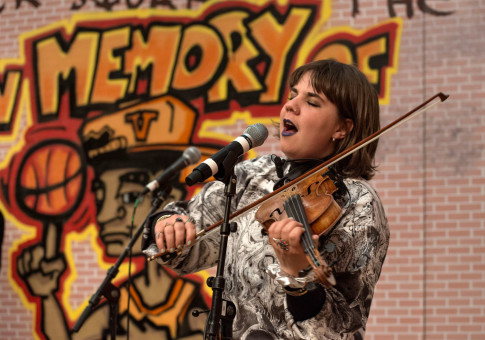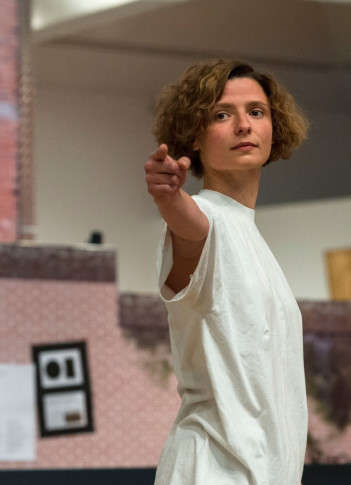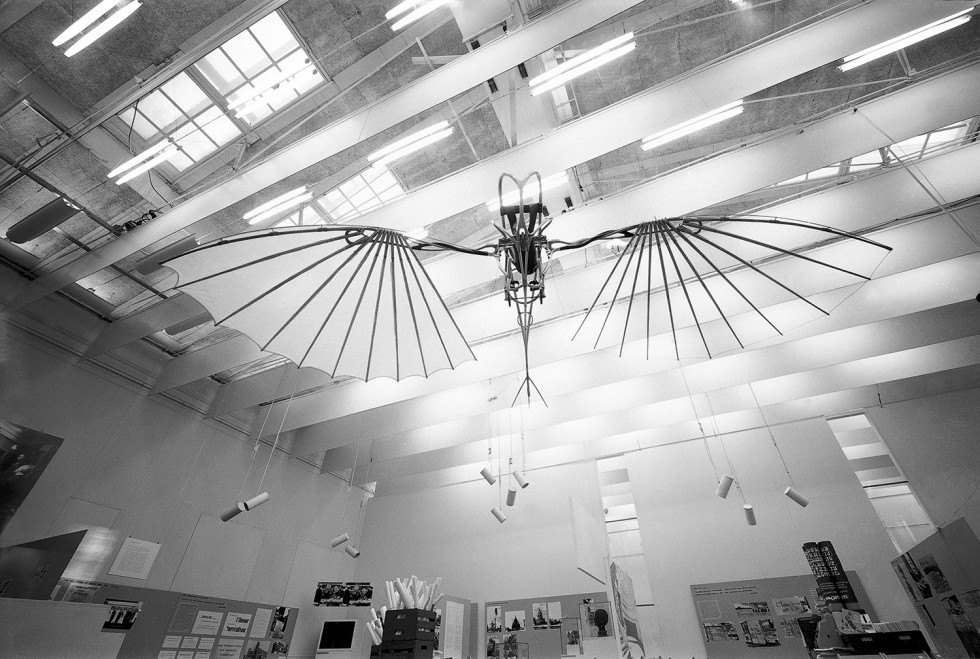
Vladimir Tatlin, Letatlin, 1932 © Vladimir Tatlin. Photo: Moderna Museet/Erik Cornelius.
Installation view from the exhibition Poetry must be made by all! Transform the world! 1969.
About After Babel
There are moments in history when a new constellation falls into place – when a transformation has been prepared but is overtaken by a series of events that make it obvious to everyone that the entire situation is about to change. The year 1989 marks one such revolution. The fall of the Berlin Wall symbolised the end of an era in European history, but the relevance of this event could hardly be regarded as limited to only one part of the world. On the contrary, we generally agree that 1989 opened up for a new world order, comprehensible only if we assume that this planet’s political events all interacted and that humanity had finally entered into a global age in which nothing would ever again be only a local concern; that bringing down the wall dividing Germany’s largest city in two was not merely a German or European concern; that the giant steps taken by the apartheid regime towards its own end were highly significant not only to South Africa; that the massacre of student-led protesters in Tiananmen Square in Beijing had consequences far beyond China’s borders. No one can doubt that these events, which made 1989 a particularly dramatic year, influenced the political climate of the entire globe. 1989 is often referred to as year zero for a new, globalised age, a new world order.
But what constitutes this new order? The all-too-rapid answers, the overreactions, came flooding in. That same year, a young theorist, Francis Fukuyama – member of an American think-tank with links to the new Bush administration – announced “the end of history”. The new world order that came about with the end of the Cold War was not just new, it was irrevocable. The dynamics of history was depleted, the think-tank’s spokesperson proclaimed, and liberal democracy, which, it was said, had no serious alternatives, seemed like the formula for the final repository for the last human being. But more of this vision later.
For the art world – which is often a seismograph for current affairs – 1989 marked a moment of expansion. It was the year a new kind of exhibition ventured beyond Eurocentrism. Artists from other continents were highlighted in The Other Story: Afro-Asian Artists in Britain in London and Magiciens de La Terre in Paris. The latter in particular triggered a heated debate on how art from other parts of the world should be presented in an institution such as the Centre Pompidou, the national modern art museum of a nation with an infamous colonial past. Why disown these artists, or (as some claimed) diminish their status by calling them “earth magicians”? Is not a contemporary African artist simply an artist? No other exhibition has been subjected to comparable scrutiny by theorists equipped with the entire apparatus of post-colonial theory. Despite the criticism, however, most people agree that it broadened the perspective once and for all at one of the key art museums in the West. The Havana Biennial was also established in 1989 – a new species of art event based on totally different geopolitical zones than those taken for granted by the Western art scene. New metropolises soon manifested themselves. This bigger world had, of course, been there all the time, but it suddenly became visible also on the art scene that is monitored by international media and acknowledged by the most influential Western art institutions. Since 1989, it is obvious that the notion of a dominating centre for art is obsolete, kept alive only by nostalgics in Paris and New York, but without relevance to any discussion that seeks to keep abreast of the times.
That year also saw the birth of a new idea that would radically change social life on earth. On 12 March 1989, the physicist Tim Berners-Lee formulated his first draft for the interconnecting of a system of hypertext documents into a worldwide web through hyperlinks. This new invention was soon known by its abbreviation: WWW. The fact that it would revolutionise the distribution of art, literature and music was perhaps not obvious on that spring day in 1989, but soon a deluge of digital manifestos was unleashed on the world, declaring a new era for art. The prophets of global communication predicted a golden future. Initially, a mood of optimistic adventure predominated, a utopian vision of a new zone free of the limitations of commercialism, a world that belonged to everyone and no one. Shortly after, however, a more sinister scenario appeared, and it soon became obvious that the global network held not only promise, but also threats, that it was not just a forum for free and creative exchanges, but could also be used for control and surveillance. This oscillation between dystopian and utopian visions of new technology, which persists to this day, a quarter of a century later, makes 1989 comparable with other dates when revolutionary ideas promised new possibilities that turned out to have downsides. This bright utopia seems inextricably entwined with a reality that appears increasingly dystopian as it progresses towards the terror of the controlling state. Are these the dialectics of all revolutions?
The fact that the digital era has managed to lock large parts of humanity into an electronic panopticon has not stood in the way of art’s ability to expand. A key figure in today’s digital avant-garde, and an unceasing fighter for creative freedom in our electronic age, is Kenneth Goldsmith, the founder of UbuWeb – a crucial online platform for experimental arts. In a short, manifesto-like text, he describes poetry as an abandoned discipline that is now being imbued with new content thanks to all the digital tools that the young generation perceives to be as natural as the typewriter once was. As Goldsmith sums it up:
The internet is the greatest poem ever written, unreadable mostly because of its size. We are drowning in language. The best poets are those who can best repurpose that language, reframing it as poetry. Poetry will be made by all.”
Poetry will be made by all! With careful rephrasing, Hans Ulrich Obrist and Simon Castets emphasise that the conditions for collective creativity have changed since the late 1960s, when an experimental exhibition at Moderna Museet – entitled Transform the world! Poetry must be made by all! – focused on a series of political-aesthetic constellations, in which new potential for art could be discerned, other than that offered by Western middle-class societies in general. Could art, instead of providing aesthetic pleasure to individuals, be conceived as an integral part of social life, that is to say, a collective force rather than a set of exquisite objects to be owned by the privileged? Ronald Hunt, who compiled the exhibition in 1969, chose to highlight a few such historic constellations, all of which were based on the idea of this alternative purpose – from the Russian Constructivists and their faith in individualised creativity, to the philosophical graffiti that appeared on the walls in central Paris in May 1968. The intentions are clarified by Pontus Hultén in his preface:
For some time it has become clear that a significant dematerialisation of art is taking place. A work of art can be born and disappear within a few weeks or destroy itself in a few hours. The different technical species that earlier were carefully kept apart are being mixed, the art forms borrow from each other without hesitation, the categories blur. The creator of the work can be an individual but it may also be a group.”
A classless society and the notion that art constitutes an element of everyday existence and life itself recur as an ideal in both Russian Constructivism and French Surrealism. Rather than a separate world of refined things and aesthetic experiences, art should be incorporated into everyday life. “Art must become the content of life,” said Malevich. This exhibition is structured on that 1920s’ Russian concept, via Dada and André Breton’s definition of Surrealism as “a means of total liberation of the mind”, to the protests and civil unrest of 1968 and the condemnation of consumerism’s ultimate phase as a spectacle.
Technology can be an instrument of liberation, writes Hunt, but not a technology creating and satisfying false needs. A liberatory technology is one freed from present restrictions, he continues, and under changed ownership – or no owners at all. A technology with common ownership. Is that situation even possible? This will surely depend, Hunt argues, on a changed consciousness, away from “competitiveness, acquisitiveness”. That everything could, theoretically, be entirely different is proven by the Iatmul people in New Guinea, featured in the 1969 exhibition. The anthropologist Gregory Bateson, who explored New Guinea, writes about the different purpose of art in their society:
In primitive society, art is often made by practically all the members of a community; but they may not recognise their work as ‘art’. What we call art is an integral and therefore inseparable part of their lives. The Iatmul are also a classless society. In artistic and social terms it suggests an ideal unity unknown in the West.”
Is this a Western academic’s dream of a completely different social order, a utopian projection, or a correct analysis of another kind of society? To the dynamic of the exhibition, this is of minor importance.
The five visionary stations featured in Poetry must be made by all! – the Iatmul people, the Russian avant-garde, Dada, Surrealism, the May 1968 unrest – were complemented by a sixth, 89plus, another example of a constellation that promised an entirely new world in which history approached its final phase, where the most magnificent and inclusive technology ever seen by mankind would actually belong to us all. Yes, the year 1989 certainly offered utopian projections of the same calibre as any of the previous stations.
New technology enables us to communicate in a natural way, while threatening to reduce the world to a small number of languages. The end of history – what became of this promise? The conclusion soon turned out to be premature, and new answers to the question of a new world order were offered in rapid succession. Only a year later, a new tome was published, backed by the prestigious and weighty Harvard University: The Clash of Civilizations? by Samuel P. Huntington. Originally an essay in Foreign Affairs, before being expanded into a whole book, it presented a picture of the world as consisting of a number of civilisations that will inevitably have conflicts with one another because of their radically different religious and cultural cornerstones.
Finding convincing alternatives to this interpretation of the new world order that emerged after 1989, and which we are all living and working in today, has been the greatest challenge to all those writers, artists and theorists who have opted to regard global humanity in a way that does not separate people into well-defined civilisations, but instead sees each individual as an immeasurably rich cosmos shaped by ideas, dreams and fantasies, one that refuses to be captured in ready-made categories such as the West or the Arabic world. What could be more important today than to emphasise that we are many together, and that this diversity within each one of us is crucial to the creative human being’s most magnificent expressions. Such disparate thinkers as the philosopher and macroeconomist Amartya Sen, perhaps Huntington’s most articulate critic, and the poet and painter Etel Adnan are brought together in this exhibition. Thankfully, we are living after Babel, she emphasises, in a world of many languages that we can all move between. Our deepest identity is created from an infinite number of things, she writes, and every language is the door to a whole world. She herself is constantly moving between languages and worlds, something she shares with the other artists in this exhibition. They all build bridges between continents, they all create art that takes sustenance from these translations and leaps between languages.
Daniel Birnbaum is the Museum Director at the Moderna Museet since November 2010. Birnbaum is a philosopher, critic and curator, previously director for IASPIS International Artists Studio Program in Sweden and 2001–2010 the director of, and professor at Städelschule Staatliche Hochschule in Frankfurt am Main, Germany. Daniel Birnbaum was the artistic director for the Venice Biennale 2009.

